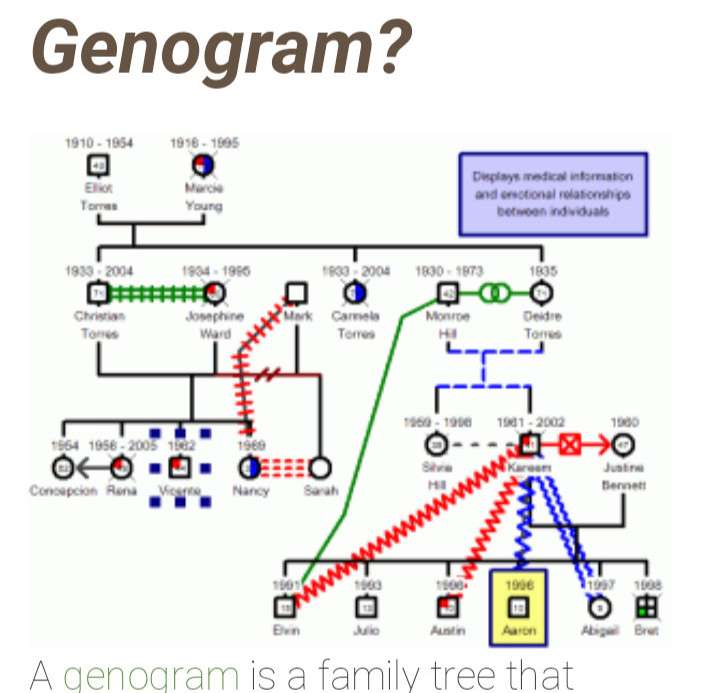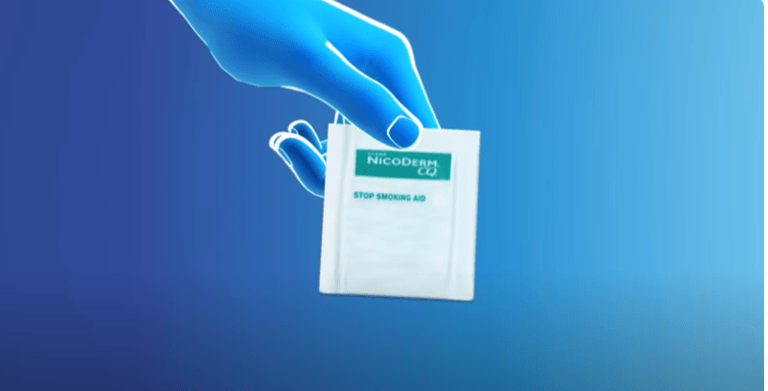Information on Gene Therapy – Diagnosing the Family Systems

After all is said and done, belonging to your family unit is what life is all about. Right from the beginning of life, you are cared for and surrounded by your family. However, to get up close and personal with the family systems, we need more information on gene therapy.
Handing Down Generational Patterns
The deeper you delve into the history and anatomy of the family, the more unsettling it gets. Eventually, with the help of genetic specialists, combing through sensitive information on gene therapy gets more and more profound. Did you know that unhealthy behavioral patterns and family dysfunction is handed down from generation to generation?
About Gene Therapy
Some genetic diseases are caused by a malfunctioning or missing gene or genes. Genes are made up of deoxyribonucleic acid (DNA) and come in pairs; one from each parent. Genes store the code – the information and instruction – the body uses to make proteins.
Nearly every function of the body is made possible by proteins. When a piece of DNA is missing or changed, it alters protein production. The protein is no longer able to carry out its normal function. So, even if a single protein is missing, the effect on the body is harmful.
Genograms During “Gene” Therapy
In the previous post, I introduced you to the creator of the first genogram, Dr. Murray Bowen. He is a highly respected psychiatrist who developed the Family System’s Model. In his practice, he used visual maps loaded with a plethora of symbols to help put dysfunctional families back together.
His maps include an array of symbols, colors, sizes and shapes. The job of each genogram is to find the missing link that destroys the family homeostasis. Bowen’s endgame brings the families back into equilibrium. He believes that a healthy family needs closeness, emotional maturity, and intimate relationships. A healthy family equates to healthy genes. 
What is a Gene?
A gene is the basic unit of hereditary traits. These traits pass down from parent to child. Apparently, genes consist of sequences of DNA. They are arranged, one after another, at specific locations on chromosomes in the nucleus of cells.
Moreover, a gene carries genetic information such as eye and hair color, height, complexion, and propensity to carry weight. Each parent has two copies of each of their genes. One copy from each parent is passed to you. Other inherited traits are:
- Dimples
- Curly hair
- Colorblindness
- Freckles
Although the number of genes may vary from person to person, it is speculated that the human body houses between 25,000 – 50,000 genes. These genes are extremely small, spaghetti-like structures, called chromosomes. and reside inside the cells. In case, you didn’t know, your body is made of billions of cells.
Cells are small units that make up all living things. In fact, a cell is so tiny, it is only visible through a microscope. The chromosomes and genes are made of DNA. Genes can be manipulated or replaced.
What is Gene Replacement Therapy?
A genetic therapist specializes, detects and analyzes genetic diseases handed down from the previous generations. They detect missing or faulty genes. In gene therapy, however, new DNA is introduced into a patient to treat a genetic disorder. The new DNA usually contains a functioning gene to correct a disease caused by mutation.
Types of Gene Therapy
When a gene alters or misses a function, the supply of important protein is affected. This causes sickness and disease. Genetic engineering, an offspring of genetic therapy, is another burgeoning field of exploration. As long as it is not misused, it is an effective way to reduce or correct certain diseases or medical conditions. 
Gene Replacement
Gene replacement uses a new, working gene to replace a nonworking or missing gene. This gene then provides the instructions for the body to make the missing protein.
Gene Addition
Gene addition involves the introduction of a new gene into the body. This gene has a specific duty to find the cause of the disease. While gene replacement works to treat monogenic diseases (caused by a single gene), targeting a single gene does not cut it. More advanced treatment is needed for complex disorders or infectious diseases. For example, hemophilia is quickly becoming a disease of the past.
New Gene Therapies
From the looks of things, gene therapies give us hope for a brighter future. Their ingenuity alleviates certain types of disease. In fact, the scientific landscape will, one day, wipe out all diseases. The sky is the limit, in terms of what science and technology will do. As for me, I’m rooting for a cure for the obesity crisis.
The Possibilities are Endless
Wouldn’t it be amazing to get rid of ALL sicknesses and disease? Science and Technology moves at a rapid pace. For instance, we now have the ability to replace the gut genome. Yes, the gut in your intestinal walls is replaceable. If this is possible, anything is possible.
Say goodbye to our fat genes. In the foreseeable future, obesity is wiped out for good. It is my hope that the children of the next generations, will not suffer with this horrific disease.
Intergenerational Transmission of Genes
Every individual is born with a unique set of traits. During fertilization, these traits pass down from one or both parents and show up as a random error in the body’s gene pool. In turn, unhealthy traits, as well as genetic diseases, continue to exist generation after generation.
Genogram Detects Unhealthy Traits
Wouldn’t you like to find out about the habits and traits of your grandparents and great-grandparents? Have no worries. All you do is find a genogram specialist. Then, go explore your family tree. There’s no medication or medical procedure involved. All you need is a well-qualified physician or highly-skill therapists who specializes in family genograms.
Genetic Therapy Versus a Genogram Session
Unlike genetic therapy, a genogram session has no medical equipment. Also, it does not involve a procedure for a specific disorder. To the contrary, gene therapy involves the editing or replacement of a gene. Furthermore, gene therapies are one-time treatments. They target the genetic root cause a disease.
A genogram maps out behavioral traits and medical histories from previous generations. Moreover, they do not treat patients medically, per se. Genograms screen for the cause of family dysfunction. Whereas gene therapy is about replacement of a gene. For example, you can see why one generation inherited eye or hair color or a gene mutation for sickle cell anemia.
Symbolism is Key to Genogram Exercises
A Genogram is tantamount to Art Therapy. It uses diagrams, symbols, and color codes in every session. Let’s take a minute to explore some of the symbols found during a genogram session. First of all, we need to explain each symbol in detail.
Symbols visually show basic information such as gender, birth, age, etc. Family genograms show marital and relationship status. Emotion symbols show depth and emotional connection.
- Woman: is a circle O
- Man: is a square []
- Female child: small circle o
- Male child: small square
- Close relationships: two solid horizontal lines ___________
- Conflicting relationships: a Squiggly line ~~~~~~
- Transitory relationship: ———–
- Poor relationship: ^^^^^^^^
- Enduring relationship: a straight line connecting the symbols O_______[]
- Divorce: two forward slashes through the line//
Genograms are used in risk assessments, counseling, medical history and in many other fields. For additional information, go online for more information.
https://www.genopro.com/genogram
Final Thoughts
At the end of the day, there are no perfect individuals, couples or families. Everyone has a flaw or two. We all need self-improvement in one way or another. Oftentimes, we end up with habits and hang-ups from past generations. No one is exempt. That’s why no one can point a finger at anyone. We have no control over our genetic makeup.
Genograms and genetic treatment therapies can be the next best thing. So, don’t feel embarrassed inheriting red hair from great grandma. Life begins, unapologetically, with genes and ends with genes. The bottom line is to embrace your inherited traits, for good, bad or indifference. Life goes on.
Did you find this post interesting? I’d really love your feedback. Also, please share this post with your friends and feel free to leave your comments and questions below. I take our correspondence very seriously.
Yours truly,
Rachele, Founder
web: mybluegenes.com
email: rachele@mybluegenes.com






Very interesting! I will share this post! I wasn’t aware of this. Do you know if they ever applied these methods to heal diabetes? My daughter is DT1 and I’m always interested in what can heal her.
Thanks for this interesting article!
Thanks, Jeff
Thank you so much for providing the information about the Facebook group. I will be sending you another article via your email. I have always been fascinated with genealogy and all things genetic. There is so much to learn. Moreover, science and technology are moving at such a fast pace. Although I have studied about genes, the new methods and procedures are mind-blowing to say the least. Clinical trials are another option to look into. I have participated in a couple of these myself. At one point I was placed on every medication you could think of. Right now, I am on very few. I strongly believe in the power to heal. We just have to find that missing link. Genetic Replacement Therapy may be the key.
Have a wonderful weekend.
Yours truly,
Rachele
I did not know that bad habits and family dysfunction are passed down from generation to generation. I am not technical but I can see that you wrote it in such a way that the common person will not have a hard time understanding genes. You are a really seasoned blogger according to me. you really know your stuff in and out.
time to monetize your blogg
Dominic,
Thank you for responding to my post. As you probably can tell, I am passionate about the study of genes. We all are connected to our past. That is the beauty of biology. Nowadays you can use a DNA kit and learn all about your family roots. We inherit certain genes from our parents. However, environment and lifestyle choices also affect our genes.
In fact, we can turn off “bad genes” and turn on “good genes,” just by the choices we make. For example, I have changed my lifestyle by making healthier food choices, and by being more active. As a result, I am able to have lower blood pressure and carry less weight. Also, I do not smoke. My dad was a heavy smoker and lost his life at a very young age (40). Although I inherited half of my genes from him, I have turned off my bad genes, so to speak.
In short, we are what we are, but we can become better versions of ourselves.
Rachele
Dominic,
You are correct.
Time to monetize.
Rachele
Hey there, Dominic
If you ever want to dive deeper into genograms,
Check this book out on Amazon https://amzn.to/3CHOjq6
Or better yet, your local library has some great Genogram resources.
Rachele